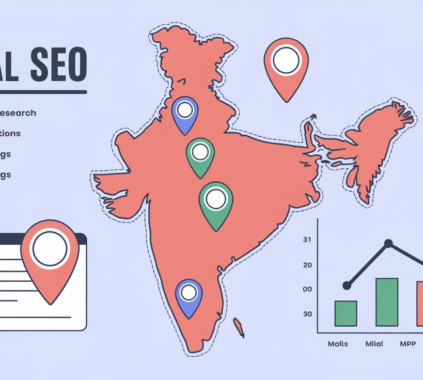In today’s competitive digital landscape, businesses need a well-rounded strategy that maximizes their online visibility and drives targeted traffic. Integrating Search Engine Optimization (SEO), Search Engine Marketing (SEM), and content marketing is one of the most effective ways to achieve this. While each of these elements serves its own purpose, combining them into a unified strategy can lead to remarkable results.
For companies seeking to enhance their online presence, whether they’re a global enterprise or focused on specific markets like SEO in Chennai, understanding how to leverage each of these components is essential. This article will guide you through the benefits of integrating SEO, SEM, and content and provide actionable steps for building a cohesive digital marketing strategy.
Understanding SEO, SEM, and Content Marketing
Before diving into how to integrate these strategies, it’s essential to understand the individual functions of SEO, SEM, and content marketing.
Do you want to visit Haridwar? travel agents in Haridwar is the right place to plan your tour. You can book your tour from here.
-SEO (Search Engine Optimization): SEO is the process of optimizing your website to rank higher in organic search results. By optimizing on-page and off-page elements, SEO helps your website attract relevant, organic traffic. SEO efforts are long-term and focus on improving your website’s visibility without paid advertisements.
-SEM (Search Engine Marketing): SEM includes paid strategies, such as Pay-Per-Click (PPC) ads on search engines. Unlike SEO, SEM can deliver immediate results, making it an effective method for quickly reaching your target audience. It allows you to bid on keywords and appear in the paid section of search results.
-Content Marketing: Content marketing focuses on creating valuable, relevant, and consistent content that engages your audience. It includes blogs, articles, videos, social media posts, and more. Good content marketing not only enhances your brand’s credibility but also supports SEO and SEM efforts by attracting and retaining your audience.
Do you want to visit char dham? char dham tour operator is the right place to plan you Char Dham tour. You can book you tour from here.
Why Integrate SEO, SEM, and Content Marketing?
Each of these strategies on its own can help increase visibility and attract customers. However, integrating them into a single, cohesive strategy has numerous advantages:
1. Enhanced Visibility: Integrating SEO, SEM, and content increases your presence across multiple platforms. High-quality content supports both SEO rankings and SEM ads, ensuring your brand is visible in both organic and paid search results.
2. Increased Relevancy: When SEO and content marketing work together, your content is optimized for the keywords your audience is searching for, making it more relevant and valuable to them.
3. Improved ROI: A unified approach ensures that each element supports the others. SEM can drive traffic to well-optimized content, while SEO and content help maintain interest in your brand long after SEM campaigns end.
4. Consistent Brand Messaging: Integration helps ensure that your brand’s message and tone remain consistent across organic, paid, and content channels, enhancing brand recognition and trust.
Step-by-Step Guide to Integrate SEO, SEM, and Content Marketing
Here’s how to bring SEO, SEM, and content together for a more effective and unified digital marketing strategy:
Do you want to visit Indiar? tour operator in India is the right place to plan your tour. You can book your tour from here.
1. Start with Keyword Research
Keywords are the foundation of any digital marketing strategy. Start by conducting thorough keyword research that includes both short-tail and long-tail keywords relevant to your industry. Tools like Google Keyword Planner, Ahrefs, and SEMrush can help you identify high-traffic and low-competition keywords.
For example, if you’re targeting SEO in Chennai, identify keywords that potential customers in Chennai might use to find services like yours. Once you have a list, group keywords based on their intent (informational, navigational, or transactional) to inform your content, SEO, and SEM strategies.
2. Create Quality, Optimized Content
Content serves as the backbone for both SEO and SEM strategies. Create high-quality content optimized for your chosen keywords, and ensure that it’s engaging, informative, and valuable to your audience.
For SEO, make sure to incorporate keywords naturally into your content, meta tags, headings, and image alt text. The goal is to rank well organically by addressing common customer questions and providing in-depth insights.
Content can also support SEM by serving as landing pages for PPC ads. Make sure landing pages are relevant to the ad copy and provide a seamless experience that guides users toward conversion. When SEO-optimized content aligns with ad targeting, SEM campaigns perform better and achieve higher Quality Scores, lowering the cost per click.
3. Use SEM for Immediate Traffic
While SEO and content marketing take time to show results, SEM can deliver immediate visibility. By running PPC campaigns on search engines, you can quickly attract traffic to your site and promote newly published content.
For instance, if you’re targeting Digital marketing in Chennai, you can run localized ads aimed at businesses or individuals in the region. SEM can increase visibility and drive traffic to your optimized content, creating a cycle where your ads attract visitors, and your content engages them.
It’s important to monitor and optimize SEM campaigns regularly. Use data from Google Ads or other platforms to refine targeting, adjust bids, and test different ad copy. This way, you can attract the most relevant traffic and maximize the value of your investment.
4. Build a Consistent Brand Voice
A cohesive digital marketing strategy relies on consistent messaging across all platforms. Your content should convey a similar tone and style across blog posts, social media updates, and PPC ads. This helps reinforce your brand identity and ensures a seamless experience for customers as they move from one channel to another.
For example, if your brand voice is professional and informative, maintain that tone in your blog posts, website content, and ad copy. A consistent brand voice strengthens brand recognition and builds trust with your audience.
5. Leverage SEO Data to Improve SEM and Content
Data collected from SEO efforts can provide valuable insights into how your audience interacts with your site. For instance, by analyzing which keywords drive organic traffic, you can identify high-performing terms and incorporate them into SEM campaigns and future content.
Additionally, use data from Google Analytics to assess which pages perform best in terms of traffic, time spent on the page, and conversions. These insights can inform your content strategy, helping you create content that aligns with audience preferences.
6. Align SEO, SEM, and Content Goals
Set measurable goals for SEO, SEM, and content marketing that align with your overall business objectives. For example, if your goal is to increase lead generation, ensure that each part of your strategy supports this goal.
For SEO, focus on improving organic rankings for high-intent keywords. For SEM, use targeted ads to attract users searching for related terms. Meanwhile, develop content that guides users toward conversion, such as case studies, product comparisons, or customer testimonials.
When each element is working toward a unified goal, your digital marketing strategy will become more effective and efficient, delivering a stronger ROI.
7. Track, Analyze, and Refine
An integrated strategy requires continuous monitoring and refinement. Use tools like Google Analytics, Google Search Console, and SEM platforms to track your progress and identify areas for improvement.
Analyze key metrics such as organic traffic, click-through rates, conversion rates, and engagement levels to assess the effectiveness of your efforts. If certain keywords or content types perform exceptionally well, double down on them. Similarly, adjust underperforming elements to improve results.
Final Thoughts
Integrating SEO, SEM, and content marketing is a powerful approach that creates a cohesive and effective strategy for Branding Companies in Chennai. By combining these elements, you can increase your online visibility, attract relevant traffic, and provide consistent brand messaging that resonates with your audience.
For businesses focusing on SEO in Chennai or any other location, a unified strategy ensures that every aspect of your digital marketing efforts works together to achieve a common goal. Through consistent monitoring, analysis, and optimization, your brand can build a lasting digital presence that drives engagement, conversions, and growth.





